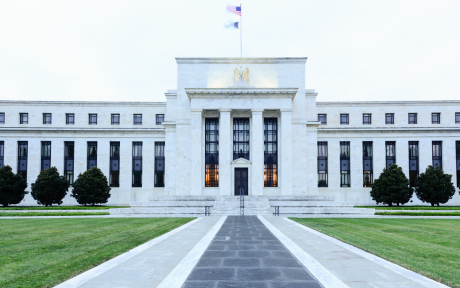“Hey, Economist!” How Was Your Ph.D. Internship?

This week, four Ph.D. students in economics and finance are wrapping up their summer internships at the New York Fed’s Research Department. The ten-week internships—which are compensated—offer interns the opportunity to further their dissertation research, interact with the Bank’s research economists, and give informal, “brown bag” lunch seminars to hear feedback on their work.
A Closer Look at the Fed’s Balance Sheet Accounting

An earlier post on how the Fed changes the size of its balance sheet prompted several questions from readers about the Federal Reserve’s accounting of asset purchases and the payment of principal by the Treasury on Treasury securities owned by the Fed. In this post, we provide a more detailed explanation of the accounting rules that govern these transactions.
How the Fed Changes the Size of Its Balance Sheet: The Case of Mortgage‑Backed Securities

In our previous post, we considered balance sheet mechanics related to the Federal Reserve’s purchase and redemption of Treasury securities. These mechanics are fairly straightforward and help to illustrate the basic relationships among actors in the financial system. Here, we turn to transactions involving agency mortgage-backed securities (MBS), which are somewhat more complicated. We focus particularly on what happens when households pay down their mortgages, either through regular monthly amortizations or a large payment covering some or all of the outstanding balance, as might occur with a refinancing.
Just Released: Updated SOMA Portfolio and Income Projections

The Federal Reserve Bank of New York’s Markets Group today published a report presenting updated staff projections [LINK TO REPORT] for the future path of domestic securities held in the System Open Market Account (SOMA) and portfolio-related income. The updated projections incorporate very recent information and are provided as a tool for the public to further understand factors affecting the evolution of the Federal Reserve’s balance sheet.
How the Fed Changes the Size of Its Balance Sheet

The size of the Federal Reserve’s balance sheet increased greatly between 2009 and 2014 owing to large-scale asset purchases. The balance sheet has stayed at a high level since then through the ongoing reinvestment of principal repayments on securities that the Fed holds. When the Federal Open Market Committee (FOMC) decides to reduce the size of the Fed’s balance sheet, it is expected to do so by gradually reducing the pace of reinvestments, as outlined in the June 2017 addendum to the FOMC’s Policy Normalization Principles and Plans. How do asset purchases increase the size of the Fed’s balance sheet? And how would reducing reinvestments reduce the size of the balance sheet? In this post, we answer these questions by describing the mechanics of the Fed’s balance sheet. In our next post, we will describe the balance sheet mechanics with respect to agency mortgage-backed securities (MBS).
Which Dealers Borrowed from the Fed’s Lender‑of‑Last‑Resort Facilities?
Historical Echoes: FOMC … “Minutes” by Minutes
Kathleen McKiernan Although the Federal Reserve was founded in 1913, the Federal Open Market Committee, or FOMC, wasn’t created until passage of the Banking Act of 1933. Congress established the name and legal structure of the FOMC as a formal committee of the twelve Reserve Banks. In 1935, a System reorganization added the seven-member Board […]











 RSS Feed
RSS Feed Follow Liberty Street Economics
Follow Liberty Street Economics